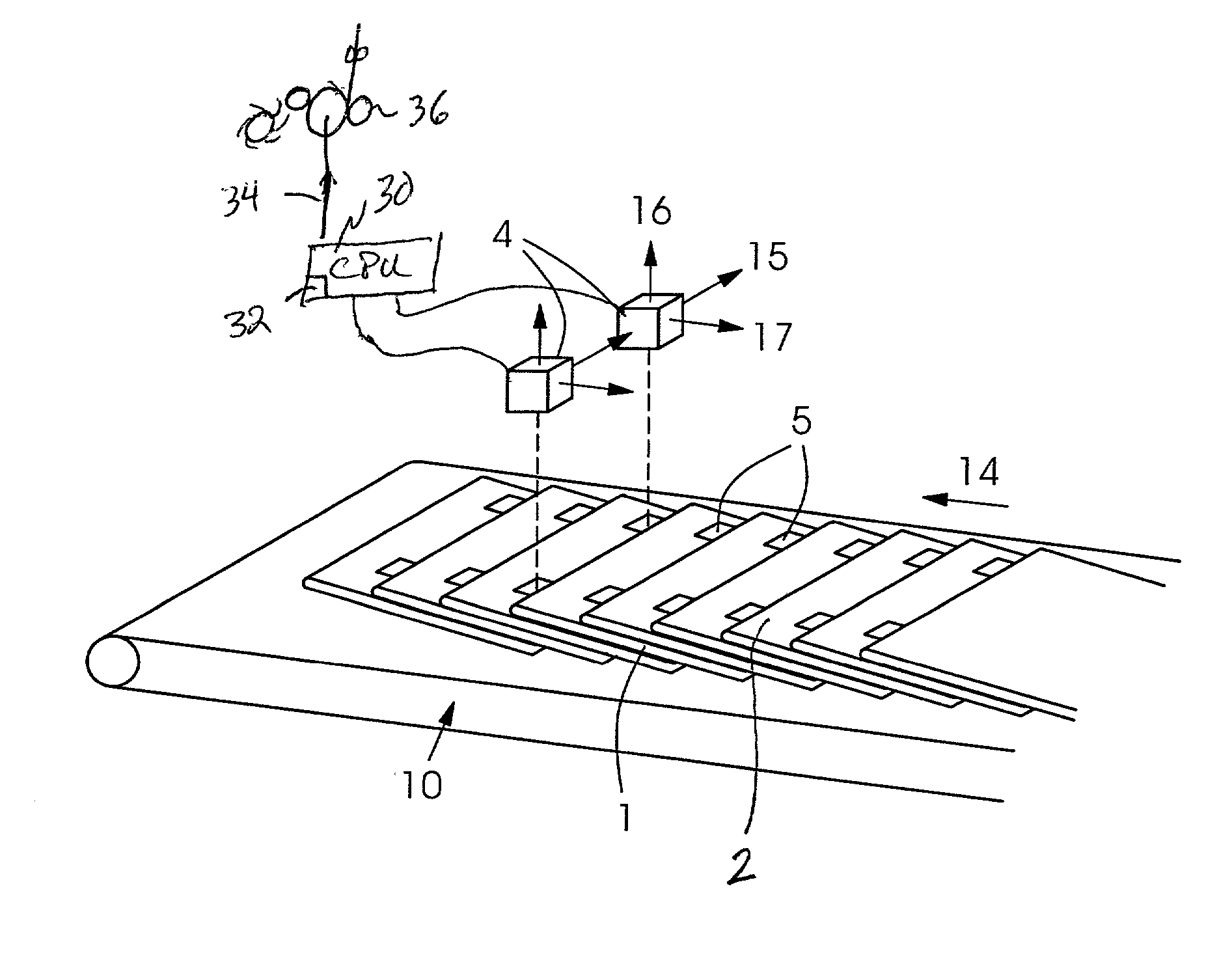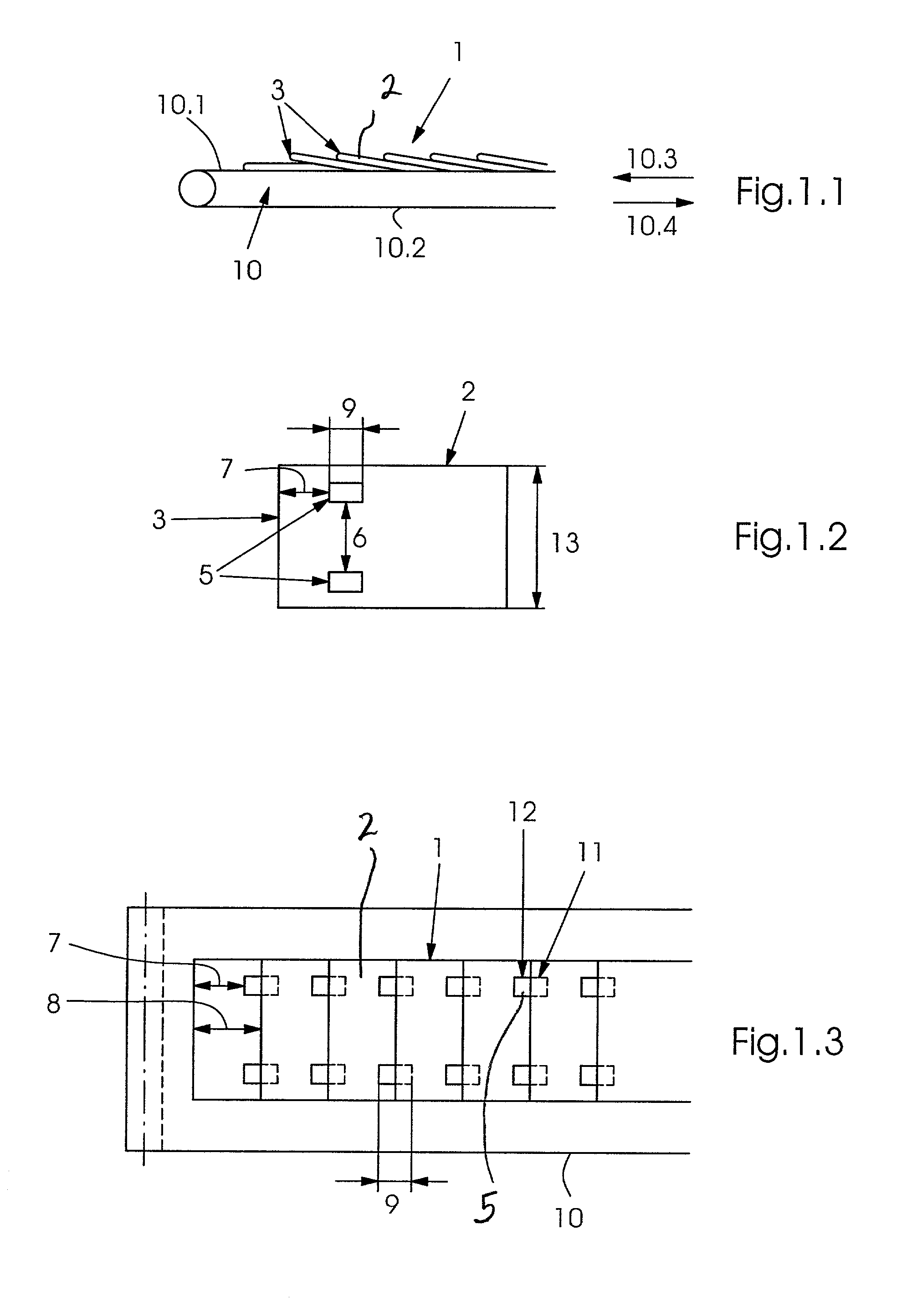Method and device for determining the accuracy of a fold position
a technology of folding accuracy and measurement method, which is applied in the direction of paper/cardboard containers, instruments, transportation and packaging, etc., can solve the problems of time-consuming and tiresome work, which can take up to several hours a day, and human visual assessment of folding accuracy involves the risk of assessment errors and manipulation, and is possibily involuntary
- Summary
- Abstract
- Description
- Claims
- Application Information
AI Technical Summary
Benefits of technology
Problems solved by technology
Method used
Image
Examples
Embodiment Construction
[0027] FIG. 1.1 shows shingled printed products in a shingle stream 1 which feature a fold 3 and are situated on a conveying element 10 composed, for example, of a conveyer band or belts, which may for example in a continuous loop. Printed products 2 are situated on upper side 10.1 of the conveyer band and preferably have a moving direction 10.3 with folding spine 3 being in a front or leading position. Conveyer band lower side 10.2 moves in a direction opposite thereto (in direction 10.4). In the shingle stream shown in FIG. 1.1, printed products 2 are arranged in an overlappingly shingled manner, the leading edge of a following printed product 2 coming to rest on the upper side of the preceding printed product 2.
[0028] FIG. 1.2 depicts a single printed product 2 which is provided with a fold 3 and features two markings 5 which are, for example, rectangular. Distance 6 of the two markings 5 is slightly smaller than size 13 of the printed product. Markings 5 have a distance 7 from f...
PUM
 Login to View More
Login to View More Abstract
Description
Claims
Application Information
 Login to View More
Login to View More - R&D
- Intellectual Property
- Life Sciences
- Materials
- Tech Scout
- Unparalleled Data Quality
- Higher Quality Content
- 60% Fewer Hallucinations
Browse by: Latest US Patents, China's latest patents, Technical Efficacy Thesaurus, Application Domain, Technology Topic, Popular Technical Reports.
© 2025 PatSnap. All rights reserved.Legal|Privacy policy|Modern Slavery Act Transparency Statement|Sitemap|About US| Contact US: help@patsnap.com



